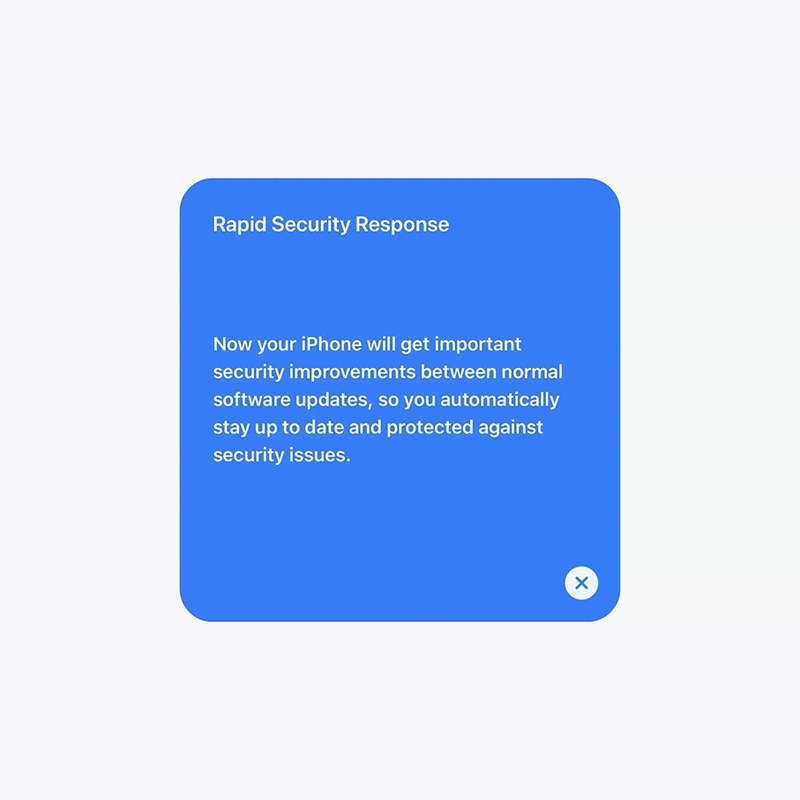
Apple's iOS is known for its fast software releases, and it's known for doing so each time it needs to squash bugs.
This happens because Apple controls the overall ecosystem, and that it things don't really have to pass through various checkpoints before delivering any form of updates to end users. This time, Apple is trying to bring those speedy patches even faster, by announcing what it calls the 'Rapid Security Response'.
It all began when Apple promised faster turnaround times for security patches with iOS 16 and macOS Ventura, and this is how it delivers that claim.
With Rapid Security Response, which is introduced in iOS 16.4.1, iPadOS 16.4.1 and macOS 13.3.1 through the usual Software Update as usual, Apple is giving itself the ability to fix vulnerabilities sooner that it would through conventional software updates.
While users have the option to disable them, this feature is essential because it allows users to have their devices patched as soon as Apple fixed it.
This should be useful for dealing with zero-day flaws.
According to Apple in the announcement:
"They deliver important security improvements between software updates — for example, improvements to the Safari web browser, the WebKit framework stack, or other critical system libraries. They may also be used to mitigate some security issues more quickly, such as issues that might have been exploited or reported to exist 'in the wild.'"
Apple said that when users downloaded a Rapid Security Response and applied it, Apple informs users by adding a letter after the software version number.
For example, macOS 13.3.1 (a).
Traditionally, users have had to wait for Apple to release critical security updates with minor version releases. With the new rapid security patch system, the firm can push important bug fixes without having to release a separate software update.
In other words, Apple can fix bugs sooner than it would through conventional software updatesm, because the patches can be applied in between the regular updates.

This concept is nothing new.
For Apple, Google and Microsoft, they all have ways to deliver out-of-schedule patches.
The main difference here is that, Rapid Security Response is the way Apple streamlines the process, and how it provides some reassurance to users.
Rapid Security Response works on the fly, and doesn't require users interference or prompt.
And because it doesn't requires users to do anything, and that it's also turned on by default, the feature also doesn't require users to reboot their device for some of the updates to take effect.
"This isn’t a standard software update. These improvements can be applied automatically between normal updates — without a restart," the company said on a web page announcing macOS Ventura.
Rapid Security Response was first announced at its Worldwide Developer Conference (WWDC), and can be found under 'Install System and Data Files.'